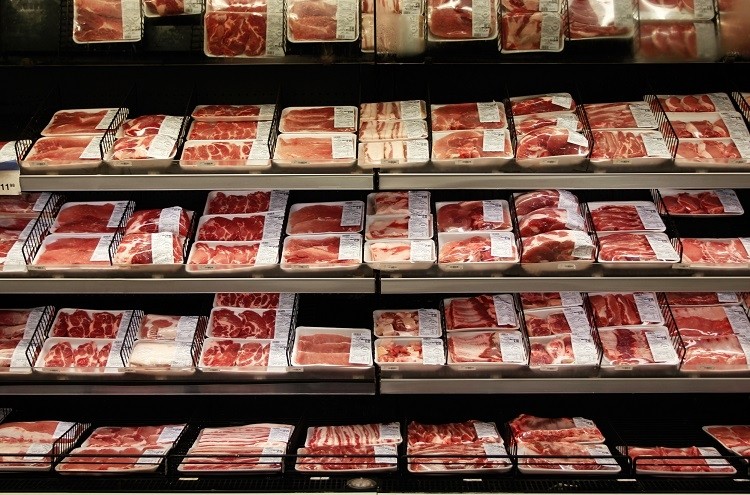Discover Fresh Cuts at Bagley Farms Meat Market Edwardsville IL for Your Next barbeque
Discover Fresh Cuts at Bagley Farms Meat Market Edwardsville IL for Your Next barbeque
Blog Article
Reveal the Art of the Butcher's Cut in a Modern Meat Market
In the ever-evolving landscape of modern-day meat markets, the butcher's cut has transcended its traditional origins, merging old-time craftsmanship with contemporary methods. What really establishes the contemporary butcher apart is their ability to create a much deeper link in between consumers and the origins of their meat.
Advancement of Butchery Methods
The advancement of butchery methods reflects an abundant tapestry of development and adjustment driven by improvements in technology, adjustments in consumer need, and a deeper understanding of meat science. Historically, butchery was a craft gave with generations, with approaches developed over centuries to maximize return and taste. The industrial change ushered in mechanization, transforming standard practices and allowing massive handling.
The mid-20th century saw butchery techniques additionally improved by scientific insights into muscular tissue biology and meat aging, enhancing both tenderness and taste. Advancements like vacuum cleaner packaging and refrigeration extended item shelf-life, enabling butchers to expand offerings and improve quality assurance. This period likewise noted the surge of specialized equipment, such as band saws and meat slicers, which enhanced precision and effectiveness in meat handling.

Computerized systems currently help in tracking pet provenance and maximizing cuts to satisfy particular customer choices. Furthermore, a revival in artisanal butchery has actually arised, blending traditional abilities with modern expertise to provide to consumers looking for honest and sustainable meat alternatives.
Comprehending Meat Cuts
Understanding the details of meat cuts is necessary for both butchers and consumers seeking top quality and value. Each cut originates from a various part of the pet, imparting one-of-a-kind flavors, appearances, and cooking methods - bagley farms meat market edwardsville il. Proficiency of these differences not only boosts culinary experiences yet likewise makes the most of the energy of each carcass. For butchers, accurate cuts mirror skill and regard for the craft, ensuring marginal waste and optimal return.

Comprehending muscle mass structure is essential; muscles used extra regularly by the animal tend to be tougher and are best matched for sluggish cooking methods, while less-used muscular tissues, like those discovered in the loin, are much more tender and ideal for cooking or roasting. Experience with these distinctions empowers consumers to make enlightened options, improving their culinary undertakings.
Choosing Quality Meat
Selecting the best meat entails even more than simply picking an aesthetically enticing piece from the display screen. The art of picking top quality meat needs a critical eye and knowledge of certain attributes that represent quality and quality.
Secondly, think about the marbling, which describes the white flecks of fat within the muscle mass. Correct marbling is a vital indicator of tenderness and taste, as it thaws during cooking, improving the meat's juiciness. Bear in mind, greater marbling frequently associates with exceptional top quality cuts, such as USDA Prime.
Texture is one more important variable; meat should feel solid to the touch, not slimed or excessively soft. In addition, bear in mind the scent. Fresh meat should have a clean, neutral odor, complimentary from any kind of sour or repulsive smells.
Coupling Cuts With Food Preparation Methods

Conversely, harder cuts like brisket and chuck roast are abundant in collagen, which breaks down right into jelly when cooked slowly. These cuts are excellent for braising or sluggish roasting, permitting the meat to soften in time and establish deep, intricate flavors. Cuts such as short ribs and pork shoulder fare well with slow-cooking techniques, where prolonged cooking times change their durable textures into succulent meals.
Lamb shanks and oxtail, which call for long term cooking to tenderize, are ideal candidates for cooking or slow-moving simmering. These approaches coax out abundant, hearty flavors while maintaining wetness. By comprehending the special features of each cut, cooks and home chefs alike can raise their cooking creations, ensuring each dish is both pleasing and unforgettable.
The Butcher's Duty Today
Browsing the progressing landscape of the contemporary meat market, the butcher's duty today prolongs beyond plain preparation of cuts. Contemporary butchers are cooking artisans, instructors, and advocates for lasting methods.
Along with crafting exact cuts, butchers currently engage straight with clients, offering cooking recommendations and customizing options to fit specific requirements and preferences. Their competence in meat aging, marbling, and taste accounts empowers customers to make informed choices, enhancing their culinary experiences. This personalized service exhibits the butcher's evolving function as a relied on advisor in the cooking area.
Furthermore, butchers are essential in minimizing waste, using entire animals to produce varied items such as sausages and stocks. click for more info This detailed strategy not only appreciates the pet but likewise lines up with modern sustainability goals. By doing this, the modern-day butcher personifies both tradition and advancement, adjusting to an ever-changing market while maintaining the artistry and stability of their craft.
Final Thought
Mastery in recognizing varied meat cuts and top quality signs equips butchers to give educated recommendations, straightening details cuts with optimum food preparation approaches. By honoring historical practices while welcoming modern demands, the butcher's role continues to be essential in today's innovative meat market.
Report this page